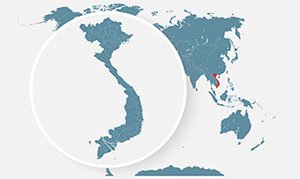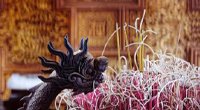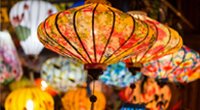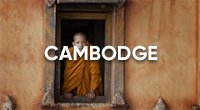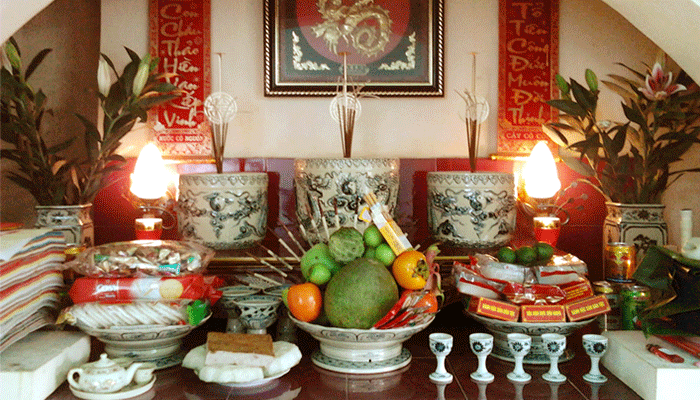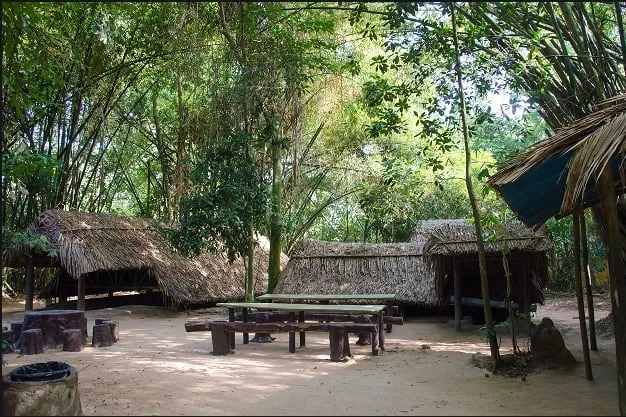Contents
ToggleAncestor Worship in Vietnam: A Living Connection to the Past
In Vietnam, ancestor worship is not just a religious ritual — it is woven into the very fabric of daily life. Rooted in deep respect for family heritage, it reflects the belief that our lives are shaped by those who came before us. This sentiment is beautifully expressed in the Vietnamese proverb:
“Con người có tổ có tông
Như cây có cội, như sông có nguồn”
(People have ancestors, just as trees have roots and rivers have sources).
For generations, this practice has been a way to honor, remember, and maintain a spiritual connection with deceased relatives. It is seen not only as an act of gratitude but also as a source of guidance, as ancestors are believed to continue watching over and protecting their descendants.
Whether through elaborate ceremonies during Tết (Lunar New Year) and death anniversaries, or through the simple act of lighting incense at a family altar, ancestor worship remains a living tradition. It is a constant reminder that in Vietnamese culture, family ties are eternal — transcending both time and the boundaries between the physical and spiritual worlds.
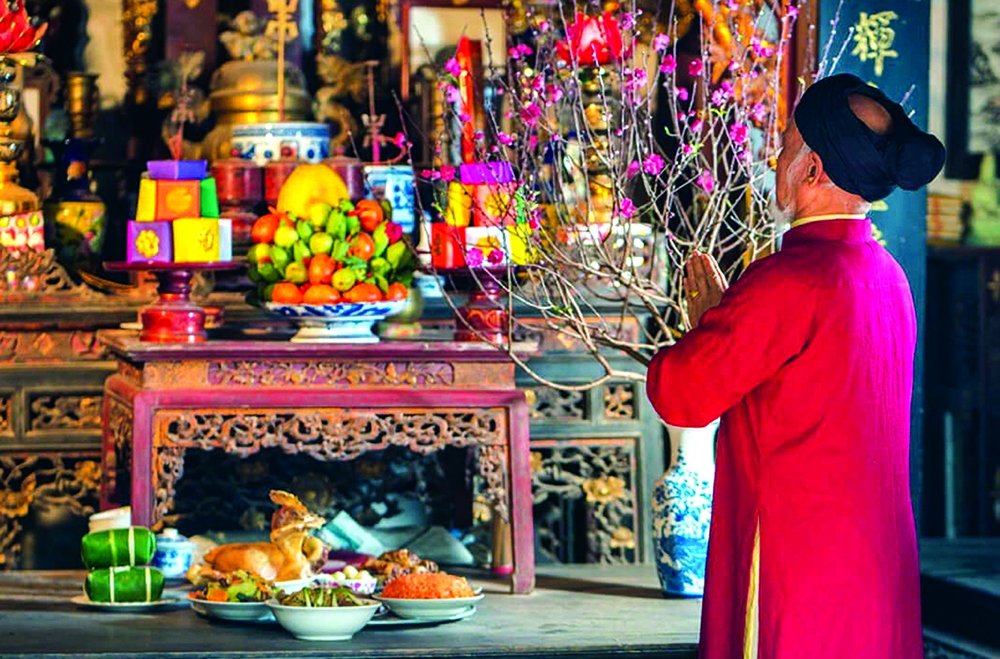
Origins of Ancestor Worship in Vietnam
The roots of ancestor worship in Vietnam trace back more than two millennia, to around 200 BC, when the practice was introduced during the period of Chinese occupation. At the time, Confucian teachings from China emphasized filial piety — the moral duty of children to honor and care for their parents, both in life and after death.
Rather than replacing local customs, these ideas blended with Vietnam’s indigenous animist beliefs, which already revered nature spirits and the souls of the departed. Over centuries, this fusion evolved into a uniquely Vietnamese tradition that placed the family — and its unbroken lineage — at the heart of spiritual life.
By the 15th century, ancestor worship was so deeply rooted in society that the Hồng Đức legal code under Emperor Lê Thánh Tông formally required families to venerate up to five generations of ancestors. This wasn’t just a matter of faith — it was considered a moral obligation and a cornerstone of social order, ensuring that respect for the past would guide the behavior of the living.
Today, while the forms of practice may have adapted to modern life, the essence remains unchanged: honoring one’s ancestors is still seen as an essential duty and a source of identity for Vietnamese families.
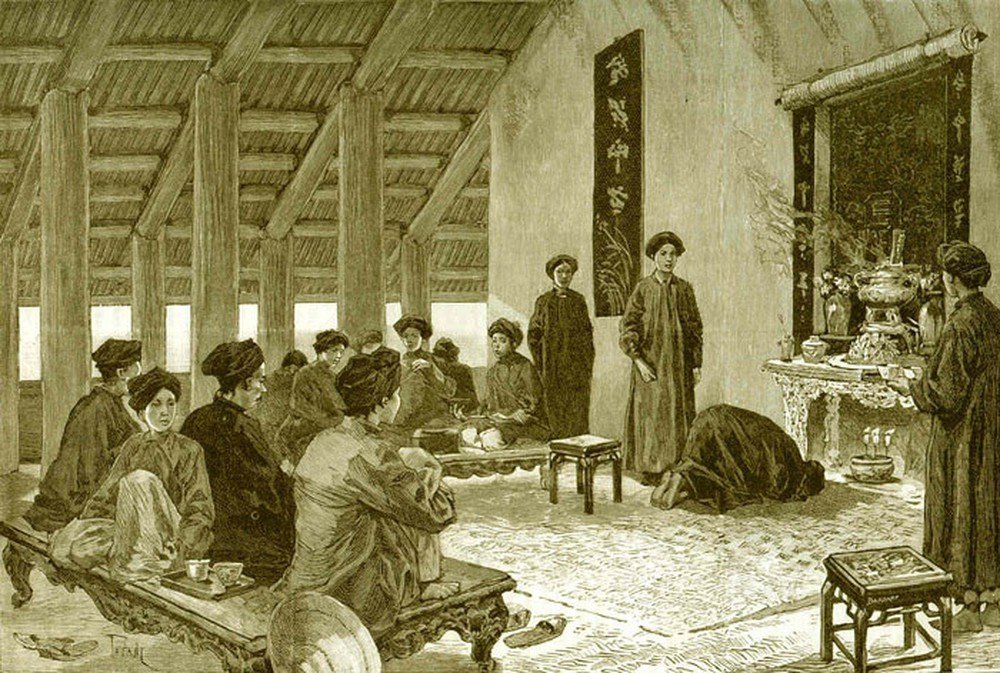
Buddhism’s Influence on Ancestor Worship
Buddhism, introduced to Vietnam as early as the 2nd century AD, has profoundly shaped the way ancestor worship is practiced. Its teachings added a spiritual framework that deepened the meaning of filial piety, especially in key life events such as funerals, memorial days, and Tết (Lunar New Year).
Central to this influence is the Buddhist principle of Tứ Ân — the Four Gratitudes — which calls on followers to express gratitude to:
-
The Three Jewels (Buddha, Dharma, and Sangha)
-
Parents and Ancestors
-
Society and the Nation
-
All Living Beings
This doctrine resonates strongly with Vietnam’s existing cultural values, placing parents and ancestors at the very heart of moral duty.
Buddhist rituals have also influenced the symbolic aspects of ancestor worship. Offerings of incense, flowers, fruits, and vegetarian food are often prepared not only as acts of remembrance but also as a way to generate công đức (merit) for the departed. During Tết, many families invite monks to chant sutras at home, helping guide ancestral spirits and bringing blessings for the coming year.
Through this fusion, ancestor worship in Vietnam is not just a family tradition — it becomes a spiritual practice that reinforces the belief that ancestors continue to guide, protect, and inspire their descendants in the present.
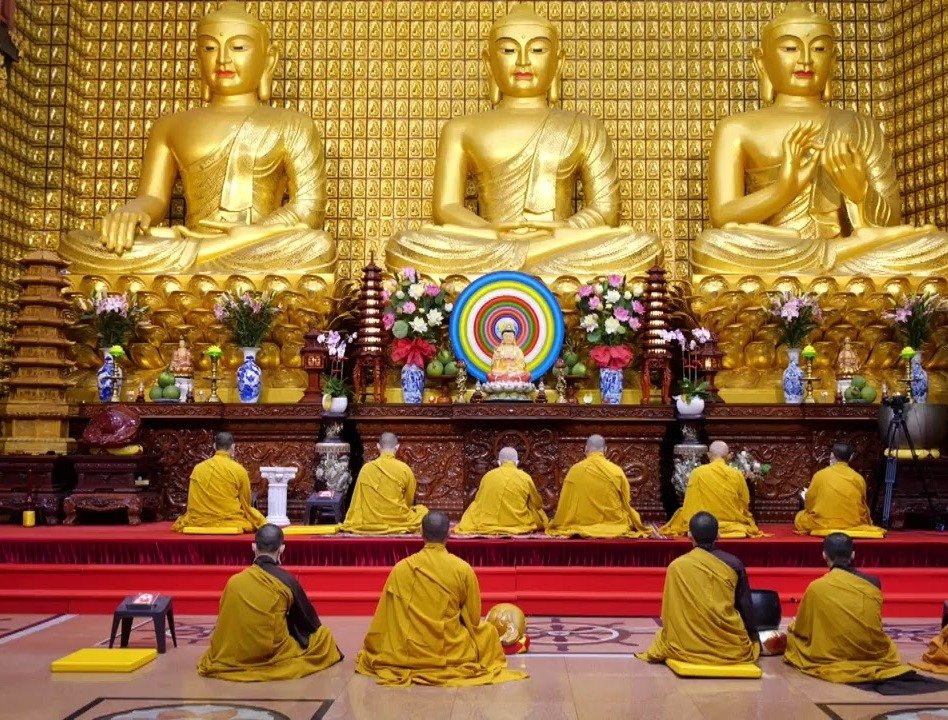
The Heart of Ancestor Worship
In Vietnamese culture, a person’s death anniversary often holds greater significance than their birthday. While birthdays celebrate the beginning of life, the death anniversary marks a loved one’s transition into eternity — the moment when they join the ranks of honored ancestors.
On this day, families gather to prepare offerings of food, tea, wine, incense, and flowers. The ancestral altar becomes the focal point, glowing with candlelight and fragrant with the scent of burning incense. Prayers are offered not only to remember the departed but also to invite their spirit home, if only for a brief moment, to share in the family’s togetherness.
For many, this ritual is more than remembrance — it is an act of gratitude for the sacrifices of past generations, a way to seek spiritual guidance in times of uncertainty, and a reaffirmation of the family’s shared heritage. By honoring the dead, the living strengthen the invisible thread that connects past, present, and future.
In this way, ancestor worship in Vietnam is not simply about loss — it is about continuity, identity, and belonging.
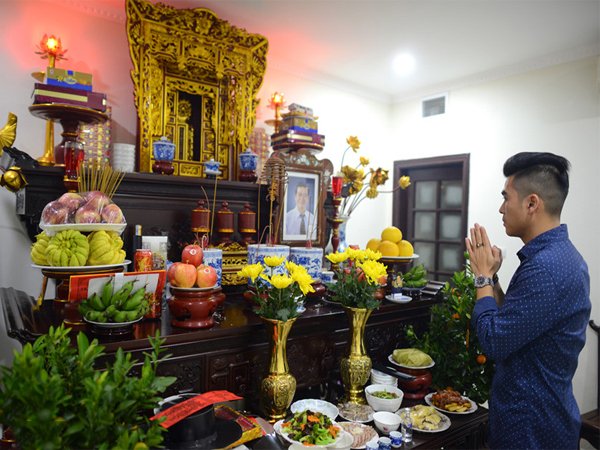
When Do Vietnamese People Worship Their Ancestors?
Tet (Lunar New Year)
Tet is the most important occasion for ancestor worship in Vietnam. In the days leading up to the new year, families thoroughly clean and decorate their homes, especially the ancestral altar. Lavish offerings of fruit, cakes, tea, and traditional dishes are prepared to invite ancestors to “return” home and join the celebrations. Prayers are offered for peace, health, and prosperity in the coming year. This is also a time for family reunions, where respect for the past is woven naturally into hopes for the future.
Funerals and Death Anniversaries (Giỗ)
Funerals are solemn and deeply symbolic events. The family follows time-honored customs — wearing white mourning garments, presenting symbolic offerings, and performing rituals meant to guide the soul of the deceased to the afterlife in peace.
Each year thereafter, the death anniversary (giỗ) is observed with a family meal, offerings, and prayers. While the mood is respectful, it’s also a warm gathering that keeps the memory of the departed alive within the family circle.
The Worship of the Hùng Kings
The Hùng Kings, regarded as the legendary founders of Vietnam, are celebrated on the 10th day of the 3rd lunar month. This nationwide holiday blends solemn rituals with vibrant festivities — from incense ceremonies at the Hùng Temple in Phú Thọ to cultural performances across the country. In 2025, this will fall on April 7, an excellent time for visitors to witness this grand expression of Vietnamese heritage.
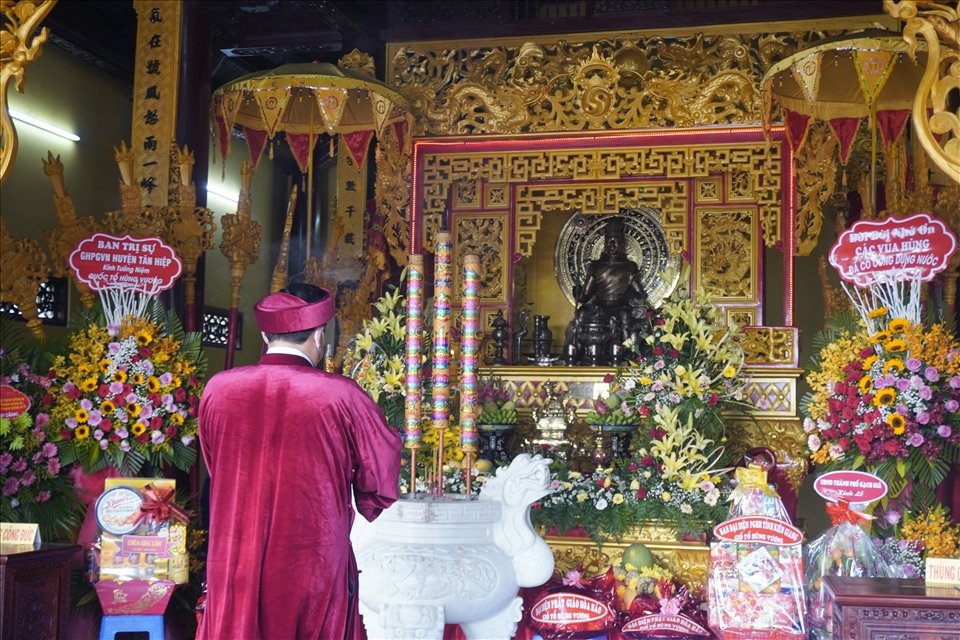
How Is Ancestor Worship Practiced?
Placement of the Ancestral Altar
The altar is placed in the highest, most respectful part of the home, away from bathrooms, kitchens, staircases, and doors to maintain spiritual purity.
Altar Arrangement and Symbolism
-
Central items: Incense burner (cosmos) flanked by candles (Yin-Yang balance).
-
Offerings: Incense, flowers, fruits, a bowl of water, and a mâm ngũ quả (five-fruit tray) representing health, peace, and longevity.
-
Additional items: Sugarcane stalks to aid ancestors’ spiritual journey.
-
Portraits and tablets: Placed behind the altar, often with lacquered boards inscribed in Han-Nom script.
Ritual Practices and Incense Numbers
Lighting incense in odd numbers is essential, as odd numbers carry positive (Yang) energy:
-
1 stick: Daily worship.
-
3 sticks: Major occasions like Tet.
-
5 sticks: Represents the five elements for harmony.
-
7 sticks: Rare, for divine protection.
-
9 sticks: Urgent appeals for help.
Burning of Votive Paper (Đốt Vàng Mã)
Paper replicas of money, clothes, or even modern items are burned to send to ancestors in the afterlife, symbolizing care for their spiritual needs.
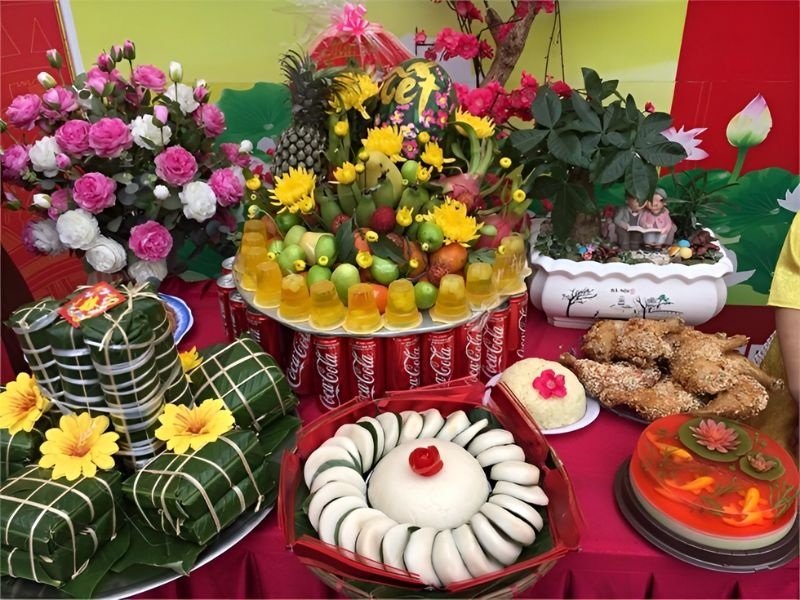
Conclusion: A Tradition That Lives On
Ancestor worship is one of Vietnam’s most enduring traditions — preserving family unity, reinforcing gratitude, and honoring the wisdom of the past.
Even in a fast-changing world, this sacred practice remains a living link between generations, echoing the wisdom of the old saying:

